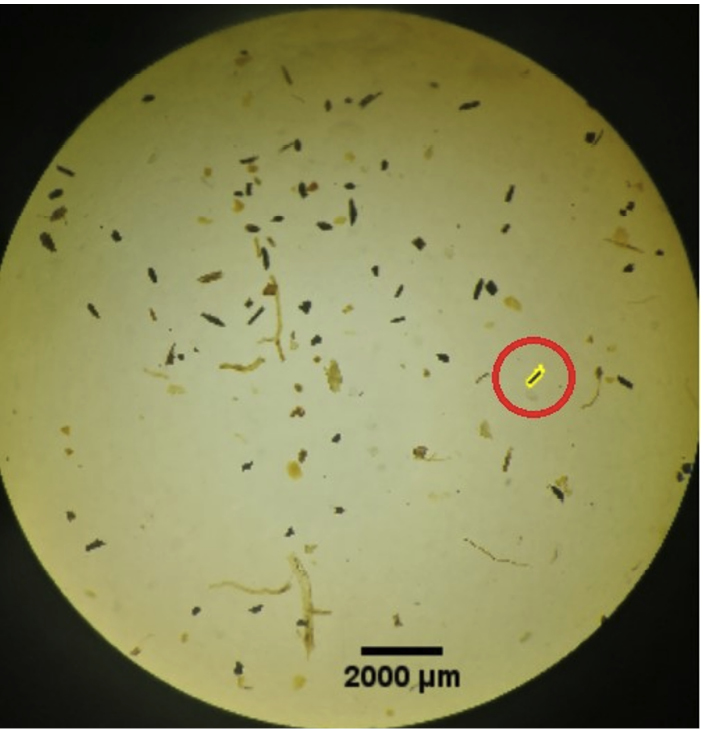- Home
- Publications
- PAGES Magazine
- Interrogating The Digital Eye: Building Capacity To Analyze and Interpret Sedimentary Charcoal Records From African Grassy Biomes
Interrogating the digital eye: Building capacity to analyze and interpret sedimentary charcoal records from African grassy biomes
Abraham N. Dabengwa, E. Twala, M. Govender, J. Finch, S. Archibald and M. Bamford
Past Global Changes Magazine
31(1)
32
2023
PAGES Inter-Africa Mobility Research Fellow, Dr. Abraham Dabengwa, was hosted by Dr. Jemma Finch for one week at the University of KwaZulu-Natal, South Africa. From 29 August–2 September 2022, he explored digital analysis of sedimentary charcoal, discussed challenges around African paleofire research, and broadened his scientific network.
Fire is a global driver of vegetation dynamics and biodiversity, and a key regulator of terrestrial carbon stocks. Forested biomes storing extensive aboveground carbon reserves are threatened by increasing fire activity from global warming and rainfall deficits (Pechony and Shindell 2010). Meanwhile, in tropical savanna and grassland biomes (i.e., tropical grassy biomes) where fire is considered endemic (Dabengwa et al. 2022), evidence shows declining fire activity. Ironically, global climate and biodiversity management policies still treat biomes with trees indiscriminately, often ignoring diverse fire histories. Publicly available global fire data is mainly derived from airborne imaging sensors developed in the last 70–80 years. However, this short timescale limits analysis of nuanced social, ecological, and climate changes shaping grassy biomes. This is where the quantification of charcoal fragments from sedimentary deposits could extend temporal fire reconstructions.
Charcoal fragments from depositional environments give clues about past fire behavior and patterns. For example, charcoal amounts are used to infer burned area, fire prevalence, and fire intensity (Duffin et al. 2008); charcoal-size abundance distributions indicate fuel flammability gradients and transitions among alternative vegetation states (Dabengwa et al. 2022); and charcoal shape factors represent fuel characteristics (Umbanhowar and McGrath 1998). Digital image analysis has advanced the analysis of shape factors linked to coarse-woody versus fine-grassy fuels (Aleman et al. 2013), with data produced at high spatial and temporal resolution. Shape factors including elongation ratios have been studied for charcoal produced by various plants (Umbanhowar and McGrath 1998). However, shape factors are considered unchanged from charcoal production to accumulation in sediments, and after sample processing.
To test the assumption of stationary shape factors in fuel attribution, we compared samples from African grassy biomes with frequent fire, fragmented fuel-beds, local presence of woody graminoids like reeds, and trampling by large herbivores. We had the following objectives:
• Design a study to conduct reproducible sedimentary charcoal image analysis;
• Build local capacity in charcoal image analysis by training junior research assistants; and
• Test the sensitivity of charcoal shape factors at sites with contrasting fire and grazing disturbance histories, sample preparation methods, and by different analysts.
Methods
We analyzed ~150 archival sedimentary macro-charcoal samples (i.e. recovered from sieves ≥ 150 µm) from three South African grassy ecosystems, together with modern samples prepared using different paleoecological methods. Sites varied in vegetation type and disturbance history. The macro charcoal had been recovered from the standard swirling pollen (Finch and Marchant 2011) and phytolith preparation methods. Retained macro-charcoal samples from different preparation methods and sites with counts visually estimated using the petri dish method were sorted in ascending order. Rank-ordered samples were divided between two research assistants (Enele Twala and Megan Govender). The researchers worked on samples with nearly matching prior macro-charcoal estimates. Samples were sub-sampled using a modified petri dish, (i.e. a 3x4 cell culture plate with 22 mm diameters) to increase the sampling area. Sub-samples were imaged using stereomicroscopes at x50 magnification. Supervised image analysis of charcoal fragments was done with an open-source, edge-detection algorithm, CharTool, in ImageJ (Fig. 1) (Snitker 2020). Samples were blind cross-validated by having researchers reanalyze samples from one another. A subset of validation dataset will be reanalyzed by a senior researcher to complete the cross-validation.
Outputs
This work is ongoing as we must analyze and interpret results. In addition, we will test a competing object-based image analysis (OBIA) for batch image analyses. The technique uses a segmentation approach similar to edge detection, and allows objects to be classified based on color, geometry, texture, and context. We will share project outputs and upcoming activities through the International Paleofire Network (paleofire.org), which posts regularly in the Past Global Changes Magazine and PAGES Newsletter, and on Twitter (@PaleofireWG). Upon completion, images and data from this project will be publicly available in the Neotoma Paleoecology Database (neotomadb.org).
affiliation
1Evolutionary Studies Institute, University of the Witwatersrand, Johannesburg, South Africa
2School of Animal, Plant and Environmental Sciences, Johannesburg, South Africa
3School of Agricultural, Earth and Environmental Sciences, University of KwaZulu-Natal, Durban, South Africa
contact
A.N. Dabengwa: abraham.dabengwa wits.ac.za (abraham[dot]dabengwa[at]wits[dot]ac[dot]za)
wits.ac.za (abraham[dot]dabengwa[at]wits[dot]ac[dot]za)
references
Aleman JC et al. (2013) Holocene 23: 1853-1862
Dabengwa AN et al. (2022) Afr J Range Forage Sci 39: 27-43
Duffin KI et al. (2008) Holocene 18: 279-291
Finch J, Marchant R (2011) Veg Hist Archaeobot 20: 109-124
Pechony O, Shindell DT (2010) Proc Natl Acad Sci U S A 107: 19167-19170
